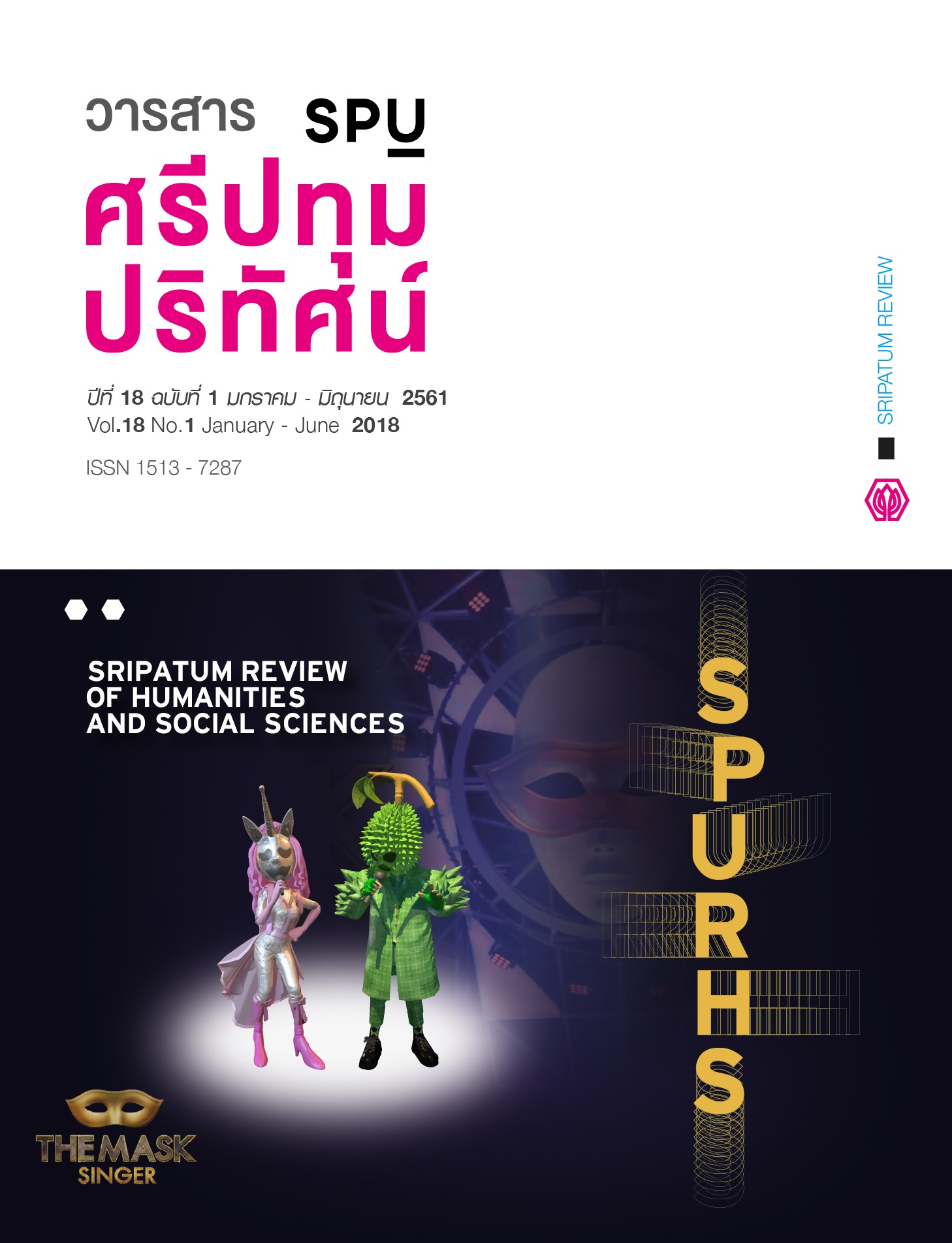THE DEVELOPMENT FRAMEWORK OF STATISTICAL REASONING IN INFERENTIAL STATISTICS
Main Article Content
Abstract
This research aimed to develop a framework for statistical reasoning in inferential statistics and to study characteristics of inferential statistics reasoning of Maha Sarakham Rajabhat University students. The research sample consisted of 63 Maha Sarakham Rajabhat University students who enrolled in the Principles of Statistics Course during the first semester of the 2016 academic year, obtained by stratified random sampling and classified into three strata as follows: stratum 1 consisting of 21 first year students, stratum 2 consisting of 21 second year students, and stratum 3 consisting of 21 third year students. The employed research instruments were (1) an inferential statistics test which was an essay test containing four test items, and (2) a semi-structured interview form for in-depth interviews. Data obtained from in-depth interviews were analyzed by protocol analysis; while data obtained from the essay test were analyzed by analysis of writing work and analytical description. The results are as follows:
1. A framework for statistical reasoning in inferential statistics:
The developed framework for statistical reasoning in inferential statistics comprised eight processes of statistical reasoning in inferential statistics, namely, process of reasoning about data, process of reasoning about data collection, process of reasoning about data presentation, process of reasoning about data analysis, process of reasoning about sampling, process of reasoning about hypothesis testing, process of reasoning about analysis of variance, and process of reasoning about data relationship.
2. Characteristics of statistical reasoning in inferential statistics of Maha Sarakham
Rajabhat University students:
Regarding the first reasoning process: process of reasoning about data, the majority of students had overall process of statistical reasoning in inferential statistics at the first level (65.00 percent), followed by overall process of statistical reasoning in inferential statistics at the fourth level (35.00 percent).
Regarding the second reasoning process: process of reasoning about data collection, the majority of students had overall process of statistical reasoning in inferential statistics at the second level (93.00 percent), followed by overall process of statistical reasoning in inferential statistics at the zero level (4.00 percent).
Regarding the third reasoning process: process of reasoning about data presentation, the majority of students had overall process of statistical reasoning in inferential statistics at the second level (97.00 percent), followed by overall process of statistical reasoning in inferential statistics at the zero level (3.00 percent).
Regarding the fourth reasoning process: process of reasoning about data analysis, the majority of students had overall process of statistical reasoning in inferential statistics at the fourth level (40.00 percent), followed by overall process of statistical reasoning in inferential statistics at the first level (37.00 percent).
Regarding the fifth reasoning process: process of reasoning about sampling, the majority of students had overall process of statistical reasoning in inferential statistics at the second level (70.00 percent), followed by overall process of statistical reasoning in inferential statistics at the fourth level (18.00 percent).
Regarding the sixth reasoning process: process of reasoning about hypothesis testing, the majority of students had overall process of statistical reasoning in inferential statistics at the first level (53.00 percent), followed by overall process of statistical reasoning in inferential statistics at the fourth level (23.00 percent).
Regarding the seventh reasoning process: process of reasoning about analysis of variance, the majority of students had overall process of statistical reasoning in inferential statistics at the third level (42.00 percent), followed by overall process of statistical reasoning in inferential statistics at the fourth level (30.00 percent).
Regarding the eighth reasoning process: process of reasoning about data relationship, the majority of students had overall process of statistical reasoning in inferential statistics at the fourth level (71.00 percent), followed by overall process of statistical reasoning in inferential statistics at the first level (15.00 percent).
Article Details
1. กองบรรณาธิการสงวนสิทธิ์ในการพิจารณาและตัดสินการตีพิมพ์บทความในวารสาร
2. บทความทุกเรื่องจะได้รับการตรวจสอบทางวิชาการโดยผู้ทรงคุณวุฒิ แต่ข้อความและเนื้อหาในบทความที่ตีพิมพ์เป็นความรับผิดชอบของผู้เขียนแต่เพียงผู้เดียว มิใช่ความคิดเห็นและความรับผิดชอบของมหาวิทยาลัยศรีปทุม
3. การคัดลอกอ้างอิงต้องดำเนินการตามการปฏิบัติในหมู่นักวิชาการโดยทั่วไป และสอดคล้องกับกฎหมายที่เกี่ยวข้อง
References
Ben-Zvi, D. & J. Garfield. 2004. The Challenge of Developing Statistical Literacy, Reasoning and Thinking. Dordrecht, The Netherlands: Kluwer Academic Publishers.
Curcio, F. R. 1989. Developing Graph Comprehension. Reston, VA: National Council of Teachers of Mathematics.
Curcio, F. R. 1987. “Comprehension of Mathematical Relationships Expressed in Graphs”. Journal for Research in Mathematics Education 18, 5 : 22.
Garfield, J. B. & Gal, I. 1999. “Assessment and statistics education: Current challenges and directions”. International Statistical Review 67, 1 : 1–12.
Gould, R., F. Kreuter. & C. Palmer. 2006. Towards Statistical Thinking: Making Real Data Real. Proceeding of International Conference on Teaching Statistics, July 2006, Salvador, Bahia: Brazil.
Helen MacGillivray, & L. Pereira-Mendoza. 2011. Teaching Statistical Thinking Through Investigative Projects. Teaching Statistics in School Mathematics-Challenges for Teaching and Teacher Education, New York: Springer.
Moore, D. S. 1997. “New Pedagogy and New Content: The Case of Statistics (With Discussion)”. International Statistical Review 65, 2 : 12.
Pereira-Mendoza, L. & Mellor J. 1990. Students’ Concepts of Bar Graphs: Some Preliminary Findings. Proceeding of International Conference on Teaching Statistics, April 1990, Dunedin: New Zealand.


